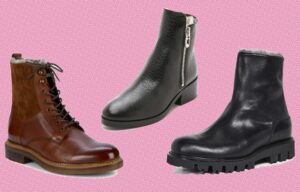By analyzing the dress codes from the European literary milieu and their impact on the clothing of artists and public figures – key fashion players – in the Rio de Janeiro of the Belle Époque, according to Gilbert’s concept of myth Durand
it is possible to identify the symbols and signs that give shape to these mythical characters, primordial images exemplified by clothing models. The work of interpreting these models makes it possible to show the problem of symbolic and aesthetic choices, as means of constructing and expressing visions of the world.
Carioca – term from the Tupi-Guarani language family…really started under the Campos Salles government
Manoel Ferraz de Campos Salles (1841-1913), fourth President…in 1898, which marked the end of the abolitionist and republican troubles, a period when the tensions between the various social factions gave way by consolidating a progressive model. These transformations modified the configuration of the elites, but not their agrarian nature and their conservatism.
The expansion of the coffee economy towards the center-south of the country triggered a phase of progress and industrial development coinciding with the end of the slave system, which led to a new growth in the population of Rio de Janeiro, due with the arrival of freed slaves in addition to foreign immigrants.
The old Portuguese colonial habit of finding that “civilization” was France and England had permeated the education, literature and art of the country. The contradictions of Brazilian society at the time also reflected the prejudices common among European colonizers in other parts of the world: they saw the colonies as a source of natural wealth, access to which was difficult for the local populations, made up of inferior races and cultures.
At the end of the 19th century in Brazil, Rio de Janeiro was the main center for the dissemination of models in the cultural field. As an administrative center, the Brazilian capital was the natural link between the different regions of the country and the capitals of other nations. Center of political and cultural life, Rio de Janeiro was also the scene of fashion. Hosting a political and administrative elite that had enormous importance as an opinion-former, the city had a leading role in the irradiation of European clothing models then in vogue.
6In addition, in 1902, a major urban reform was undertaken, directly inspired by Haussmann’s Paris, which considerably changed the appearance of the city by reconfiguring its physical and symbolic spaces
Modern standards of public hygiene, public transport and electricity were then introduced, inaugurating a new phase of Europeanization of Brazilian culture materialized by the layout of the main streets of the city center, by the eclectic architecture and by the ‘clothing.
An important center of interest in European culture, clothing practices in the main urban centers of Brazil, since the 18th century, obeyed the paradigms proposed by a Franco-English elite attentive to the distinctive signs of social position that frequent variations of costumes provided. In the capitalist economic context, marked by the rise of the industrial bourgeoisie and by a relative mobility between social strata, clothing has ceased to be a mark, par excellence, of position to become the expression of individual personality, much to the taste of the liberals of the time.
In the genesis of the male costume of the 19th century , we find the legendary figure of George Brummell
Kelly, Beau Brummell: the ultimate man of style, Free Press,…who marked by his behavior, his statements and his choices of dress the transition between the dress model of the court and the bourgeois, by affirming, thanks to the modernization of the male costume, a new guideline of the dress of the English elite and European. We then inaugurate the first of the many facets of the dandy proclaimed by the writers of various aesthetic schools during the 19th century .
9Plebeian, without title or pedigree, “Beau” Brummell asserted himself by establishing a perfect and superior self-decreed elegance, capable of dominating the worldly and aristocratic life of his time. After arrogantly confronting the greats of his time, he died poor, sick and lonely in exile in France. His destiny and his tragic end confirmed the founding role that he played. Imaginary contents taking shape through appearance, rupture of the consolidated model, this revolt and the affirmation of new aspirations emerge from the place of origin of the myth, the first metaphorical level designated by Durand in his interpretative diagram



